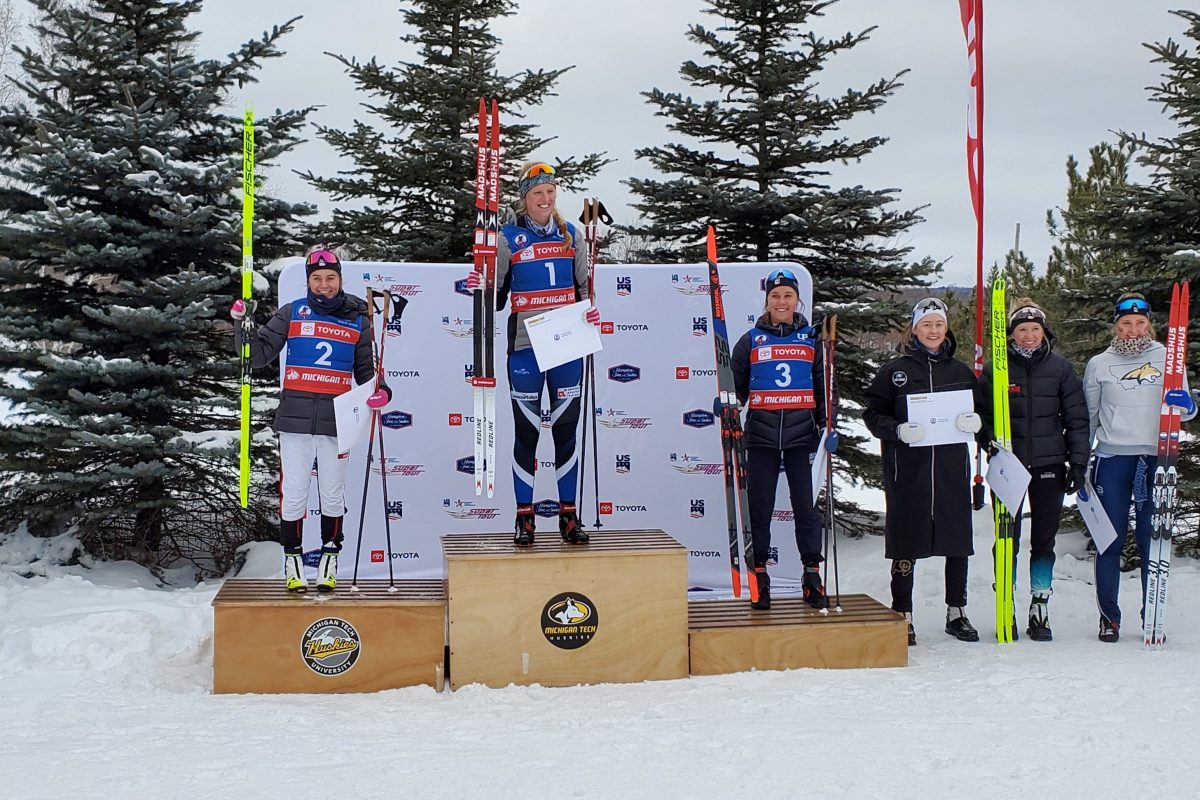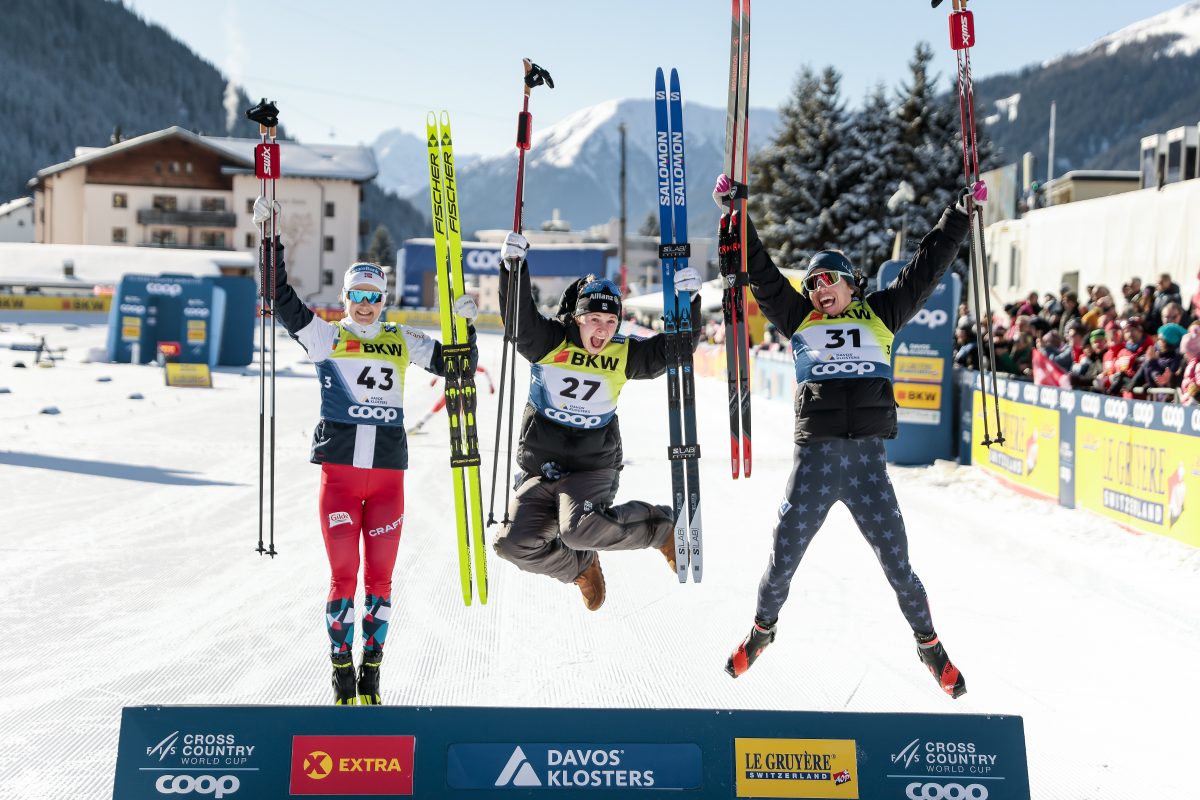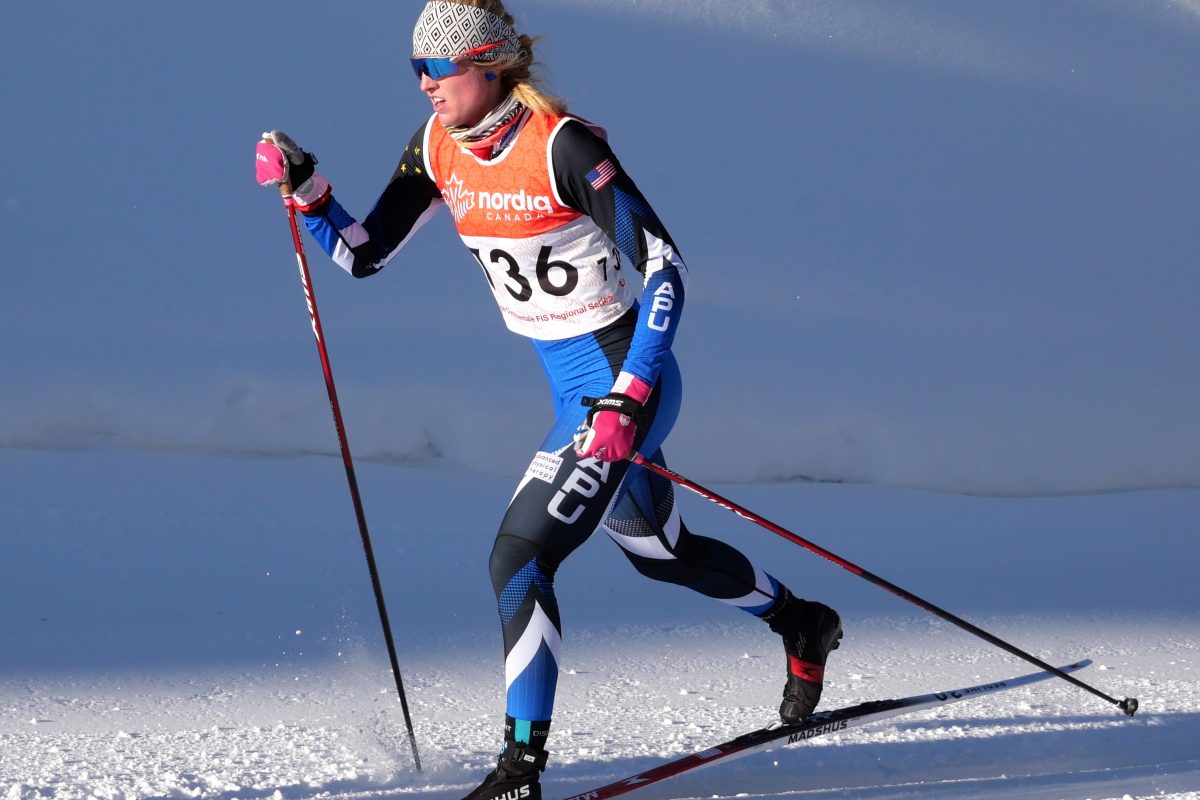American Noah Hoffman thinks he could have done better in Sunday’s 9-kilometer hill climb event in Val-di-Fiemme, Italy, the final stage in this season’s Tour de Ski. But he still achieved his goal of finishing in the top 30 overall.
Hoffman started in 31st place, and made up six places throughout the climb to finish in 25th . The race up the downhill ski area Alpe Cermis is arguably the hardest race on the World Cup circuit in the best of conditions (See FasterSkier’s complete race report). But besides the obvious difficulties presented by 495 meters of climbing in barely 3 k, the weather did not cooperate.
“It was a rainy, rainy situation last night and most of the day today, and then it turned to snow.” Hoffman’s teammate Liz Stephen said of the weather.
“By the time I got to the stadium it was snowing everywhere” Hoffman said. “It was quite soft and quite slow.”
The slow conditions proved tough for Hoffman, who struggled to find the necessary speed on the early part of the course.
“I felt like I started hard, but the two guys that started 10 or 15 seconds behind me caught me [early on]. Unfortunately, I was unable to stay with the guys that caught me and they put a lot of time into me on the three to four kilometer [gradual downhill] to the base of Alpe Cermis. It was definitely not a good start.”
As to that, U.S. Ski Team Coach Matt Whitcomb blames himself.
“I‘m picking on myself – I sent Hoff out on a ski that by the time he started had too much structure on it.”
Stephen seemed to confirm that Hoffman had bad skis, but seemed to blame the changing conditions, instead.
“The [newly-fallen snow] was extremely slow and it made ski choice a bit difficult,” she said. “There was only an hour and half between the start of our race and the start of the boys’ race and the conditions were quite different. So all the testing that had gone on in the morning was definitely different from when I started and when Noah started.”
Whitcomb continued:
“It is one of those things where you take a gamble: it was incredibly wet, pouring rain for hours and hours, three inch puddles in the course, but …the snow did start accumulating. We were kind of hoping that [by the time Hoffman started] the water would still be churned up and that the course would still be chopped up. But I think that it had snowed just kind of enough, and that it had just got to that point where it was a little bit too much, and I think Noah had too much structure in his skis. He suffered on the downhill despite what looked to be quite strong skiing on the climb.
“I wouldn’t say that it was a disaster by any means, but I would still like to go back and put a few different skis on the snow.” Whitcomb said. “I can certainly take responsibility for that.”
For his part, Hoffman didn’t dwell on the skis or course conditions, but did acknowledge a significant loss of time in comments on his website, noahhoffman.com.
“[The two guys who passed me early in the course] dropped me and put 48 seconds into me before the base of the climb. That is an absurd amount of time for a four-kilometer gradual downhill. I believe I am good enough to ski with anybody in the world on that section because I skied as well as anybody on similar terrain two days ago,” he wrote.
Once into the steep portion of the climb – up to 28% grade – skis and strategy seem less important than pain tolerance.
“Once you started climbing ski speed is not super important because you’re not gliding a whole lot up that climb,” Hoffman said.
Whitcomb discussed the dangers of over-coaching, acknowledging that the athletes know best what to do on the course. Indeed, it’s pretty simple.
“You don’t have a big range [of effort], the gas pedal has to be in one spot – you go much above your threshold and you are going to blow up” said Whitcomb of what it takes to ski up such unrelenting terrain. “In terms of pacing you just kind of leave it right at that redline and feather back if you need to.”
And most of all?
“And make sure you don’t leave anything in the tank. If you are a World Cup skier you don’t often leave anything in the tank.”
As far as placing on the course, the action is slow enough that the skiers can determine everything on their own without needing to be fed information by coaching staff.
“You can see all the skiers within a minute and a half of you; everyone is moving so slowly you don’t need a lot of information out there. It is really different than a normal situation where we try hard find out [what is happening on the course]; literally they could give us an update on US Nationals during the race.”
As for his own performance, Hoffman was a bit under-whelmed.
“I feel like I am a better climber than I have shown in my two efforts on Alpe Cermis. I really feel like I can have a top-five or win the climb on time on day in a race like this. I think climbing on skate skis is a really strength of mine I just haven’t put together a good climb in my two tries in this race so I look forward to another opportunity,” he said.
Whitcomb didn’t entirely agree.
“I am really proud of his 25th place finish. He fought hard and it was a great Tour for him.”
They do concur on a bright future for the Tour. Whitcomb emphasized the importance of experience in the Tour, noting that good nutrition, managing the tough travel schedule, proper recovery and longevity can be paramount.
“It certainly helps having skied it before; you definitely find the athletes get better and better, not just because they are getting faster from year to year, but because they are getting better at the Tour,” Whitcomb said.
Hoffman had a direct perspective on how it feels from an athlete’s perspective.
“It was a fun series with a lot of ups and downs,” he said. “What stands out to me is how one or two good efforts on the Tour can really put you in a good place; bad days are really easy to overcome because you have seven opportunities.”
Whitcomb agrees, knowing that his athletes need to keep perspective after a bad race.
“Part of the experience of having skied the Tour is knowing that you can have a couple horrendous stages and stay alive. So you don’t have to panic if something is not going well on one day or another, and just have patience. If you are in good shape you can probably have a good Tour de Ski,” Whitcomb said.
And what was the take of Hoffman’s teammate Liz Stephen?
“It is like a traveling circus.”
Topher Sabot, Pasha Kahn and Matt Voisin contributed reporting.



